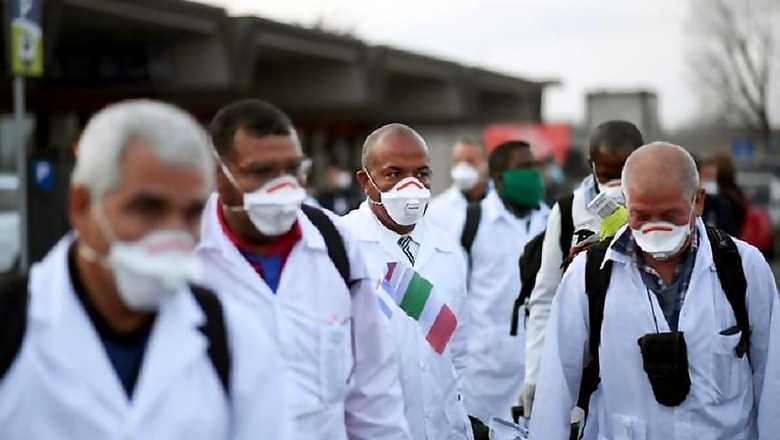
views
Researchers assessing the preventative measures adopted during the 1918-19 Spanish flu pandemic have found that cities which enforced early, broad isolation and prevention measures had lower mortality rates.
The scientists, including Stefan E. Pambuccian from Loyola University in the US, reviewed published research from three papers dating back to the Spanish flu pandemic which affected one-fifth to one-third of the world's population, and killed 50 million people.
They said measures like closing of schools, banning of mass gatherings, and mandated mask wearing, case isolation and disinfection/hygiene measures were effective in curtailing the disease in several cities.
According to the review research, published in the Journal of the American Society of Cytopathology, the US cities San Francisco, St. Louis, Milwaukee and Kansas City collectively had 30 to 50 per cent lower disease and mortality rates than cities that enacted fewer and later restrictions.
One study the scientists reviewed showed that these cities also had greater delays in reaching peak mortality, with the duration of the
controlling measures correlating with a reduced total mortality burden.
"The stricter the isolation policies, the lower the mortality rate," Pambuccian said.
The Loyola University scientists said just like in the current COVID-19 pandemic, many people in 1918 and 1919 thought the strict measures were not appropriate or effective at the time.
The Spanish flu killed an estimated 675,000 in the US, "and there was skepticism that these policies were actually working," Pambuccian said, adding that the measures adopted did indeed make a difference.
"In 1918, the world was still at war "with overcrowded barracks," with much of the US living with "poverty, poor nutrition, poor hygiene, household/community-level crowding, and a lack of preparation of the population and decision makers due to cognitive inertia and poor medical and insufficient nursing care," Pambuccian said.
"Although the world is a much different place than it was 100 years ago, the efficacy of the measures instituted during the 1918-19 pandemic gives us hope that the current measures will also limit the impact of the COVID-19 pandemic," he added.


















Comments
0 comment